When we were in Montreal this summer, I was lucky enough to visit Rodin's Métamorphoses Exhibit at the Montreal Museum of Fine Arts.
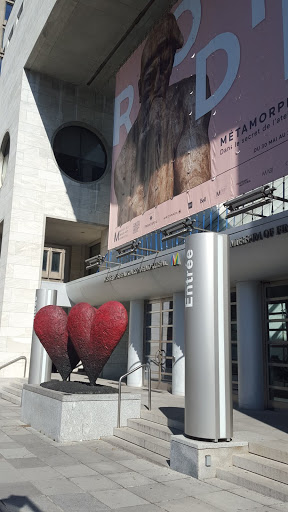
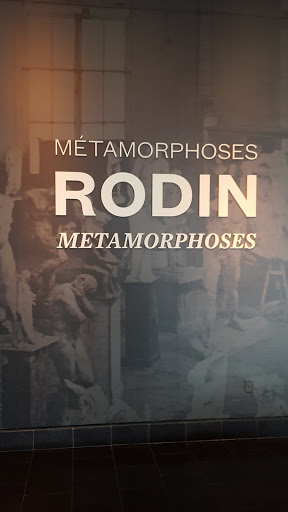
This exhibit is now traveling to the Virginia Museum of Fine Arts, Richmond (November 21, 2015 – March 13, 2016) and to the Peabody Essex Museum, Salem (May 16 – September 5, 2016) - so make plans to visit if you are anywhere near.
Parisian Auguste Rodin's most famous sculpture is, of course, The Thinker. But he had countless other sculptures and commissioned projects, including the Dantean project Gates of Hell (1880) and the Burghers of Calais (1880s).

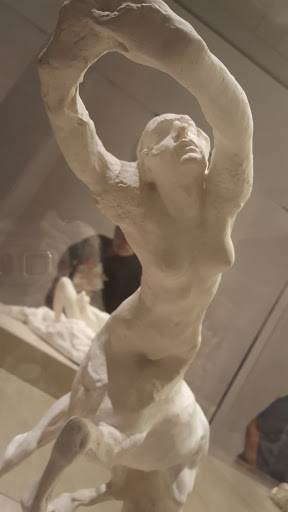
The Centauress, 1887 - just LOOK at that movement!

In this exhibit, there are several major themes, as detailed on the Montreal Museum of Fine Arts website:
The Hand of the Master
The Hand of God, the marble masterpiece in the collection of the Metropolitan Museum of Art, New York, in which the fingers of the demiurge emerge from inert material as though to bring forth humanity’s first couple, introduces this reflection on the studio. Rodin is reflecting on the evocative power of the creative hand that births, caresses, threatens or destroys the models that have just been created. It is the artist who transforms the substance, modelling it, lending strength and life to the figures.

Plaster, Rodin’s World
The mere mention of moulds raises infinite possibilities of repetition, fragmentation, assemblage and enlargement – all common peripheral studio practices that Rodin was well acquainted with. But he placed them at the centre of his creative process, making way for chance, intuition, experimentation and study, in keeping with an unprecedented principle of continuous creation.
For Rodin’s work of creation and repetition, plaster remained a fundamental material. He gradually became more involved in exploiting a repertoire of earlier realizations than in creating new ones, and this maturation process became the backbone of his oeuvre.


Jules Desbois, Parçay-les-Pins, France, 1851 – Paris 1935, Mask of Death, About 1890
Marble and Technicians
Although it seems that Rodin only rarely worked with tools himself, he attentively supervised the transposition of his sculptures into stone. A demanding, even difficult foreman, he nonetheless recognized the qualities of his best technicians, students and friends, like Jules Desbois and Antoine Bourdelle. He entrusted his modellos to the well-trained chisel of excellent sculptors who worked for him to make ends meet and whose now-forgotten names, like that of Jean Escoula, deserve mention.

Marie Fenaille, Her Head Leaning on her Hand, 1912
Eugène Druet
The exhibition Metamorphoses: In Rodin’s Studio provides the Museum with the unique opportunity to unveil its collection of photographs of Rodin’s works taken during the artist’s lifetime by Eugène Druet (1868-1917). Druet met Rodin in 1896, and the two collaborated to create and sell the images featuring the artist’s plaster, marble and bronze works in carefully staged settings. Today, this series is the most important set of his photographs after the collections of the Musée Rodin, of course, and the Nationalgalerie in Berlin. Rodin was especially interested in using photography in the recomposition and development of his works and viewed the medium as a creative tool, on a par with drawing and casting.

Rodin on his deathbed. Pierre Choumoff, 1917

Rodin's Studio
Let me tell you about my experience. First, I remember seeing Rodin's work throughout my life, but moreso when I was in Europe. I've always loved The Thinker (my granny had a replica on her desk), and have been amazed at his extraordinary technique.
But walking into this exhibit was like entering a Rodin extravaganza, one where you didn't know where to look first. And, you should give yourself as much time as possible for this exhibit, for if you're like me, you will want to look, and look, and look (and wish we could Mrs. Basil E. Frankweiler it!).

Small water fairy, plaster, 1903
A first glance at any of the art is proof that Rodin is a master. His work is so powerful and naturalistic that you feel as if they are real - snapshots in time. I spent a lot of time at the exhibit crouching, looming, peering around, circling. The sculptures just begged to be discovered from all angles, and so I did as they asked.

How did Rodin know Ed and I? Holding hands is love, compassion, tenderness.

See those studies? Genius at work.

Left Hand #2, Hand of the Pianist (anyone who has played piano has done JUST THIS)
I was rewarded. With tendons, hands, faces in agony, torsos twisted, eyes that seemed to stare into my soul.
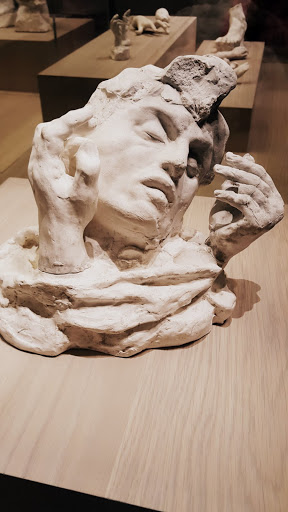
Assemblage: Head of the Shade surrounded by two hands, plaster, 1900-02

The Scream, 1898 (part of the Gates of Hell)

Dying Centaur, 2nd study, 1914 - can't you FEEL his pain?
Many of the sculptures were figures worked in advance for the Gates of Hell - the Thinker included - he was meant for the top of the Gate! When you absorb these powerful pieces and then see them all together in the final portal, it is as if Dante's Inferno has indeed come alive. I came back home and re-read it. Seeing this enriched my reading - I highly recommend this experience (or the book, if you can't make the exhibit) for a detailed reading of the Inferno, or for your classroom projects.
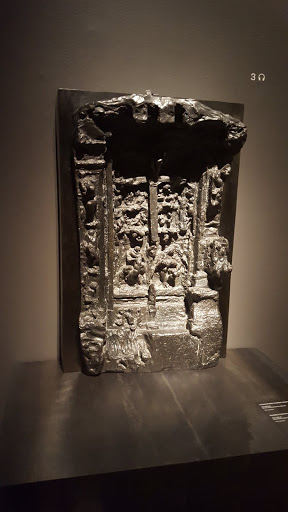
The Gates of Hell model. I spent a lot of time staring at this one.

Variations: Pierre de Wissant, colossal head, 1900-10
Seeing Rodin's works - finished, or in process - was an education in sculpture. How he managed to create leaps, movement, stretches, and agony from marble is extraordinary. I didn't want to leave - but I did want to learn more, and imagine myself as an apprentice in his studio, learning from the master. I can't fathom how he created such emotion and movement in his work, but I want to time travel and see it happen. Since we can't (yet), this exhibit is a marvelous, once in a lifetime experience.
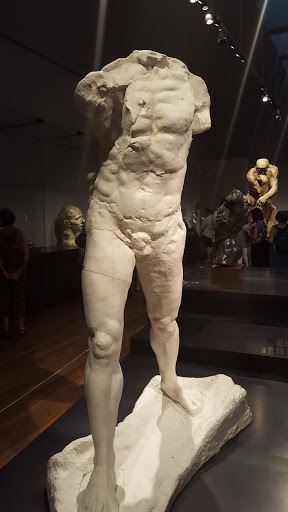
Cybele, large version, 1905, patinated plaster

Ugolino and His Children (for The Gates of Hell), 1882, plaster

Speaking of The Thinker, Rodin illuminated his aesthetic: "What makes my Thinker think is that he thinks not only with his brain, with his knitted brow, his distended nostrils and compressed lips, but with every muscle of his arms, back, and legs, with his clenched fist and gripping toes."
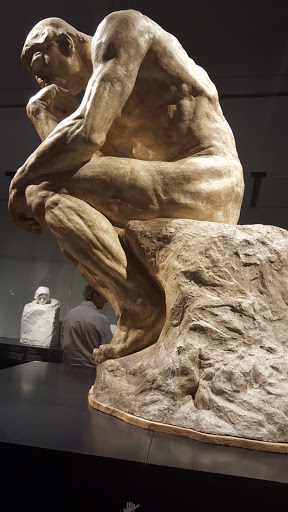
At the end of the exhibit, the very last room was a sensory gallery, with pieces for people to touch. At the center of this quiet room, I slipped my hand into the hand of the Thinker. I felt everything - an immense intent of thought and art from Rodin, the tendons and muscles in his arms and hand, the purpose of the piece for the Gates of Hell, and the importance of art. I closed my eyes, and tears rolled down my face. Rarely do we touch art, of course, but when we can, well, it floods our being.
#ArtMatters

To learn the evolution of this exhibit: http://wtvr.com/2015/11/19/rodin-evolution-of-a-genius-at-the-vmfa/
Pin for later:
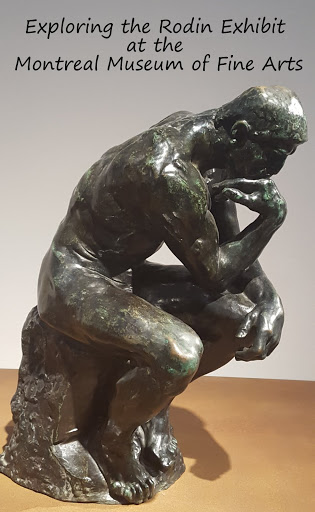
All photos courtesy and copyright Wandering Educators
